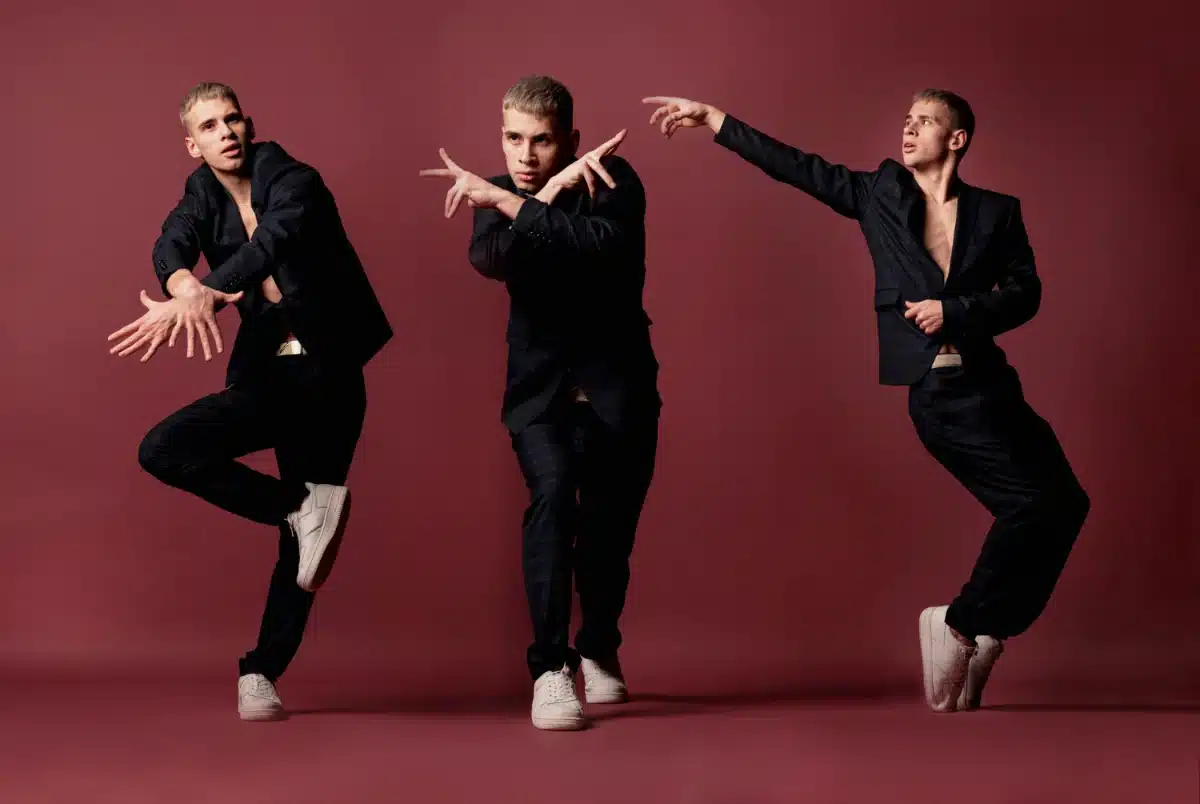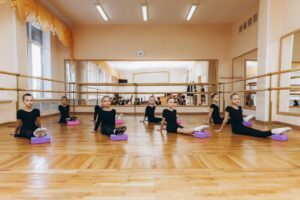When you’re dancing, it’s easy to get caught up in perfecting the technical side and forget about expressing yourself. After all, dance is about precision and superb movement quality.
However, what sets an amazing dancer apart is their ability to turn music into a captivating art form. This means really understanding the music, feeling it emotionally, and appreciating how dance can convey those feelings. And doing this isn’t just for anyone. Whether you’re a beginner or a professional dancer, you need to grasp the basics of dynamics in dance to unleash your potential fully.
But what does the term “dynamics” in dance mean? Well, when a dancer moves, “dynamics” is how force and time work together to make movement happen in the body. It is also known as “elements of dance.” It’s how we move.
Dynamics in dance are like unique features. We use six main movement qualities to describe them:
- vibratory movement
- suspended movement
- swinging movements
- sustained movements
- percussive movements
- collapsed movement
Each element can be performed on its own, but to create a beautiful, well-orchestrated dance, you need to mix and match them to make the dance more interesting and exciting. In this blog, we’ll explore the importance of the elements of dance and learn how to differentiate them from one another to better understand this topic.
Why is it important?
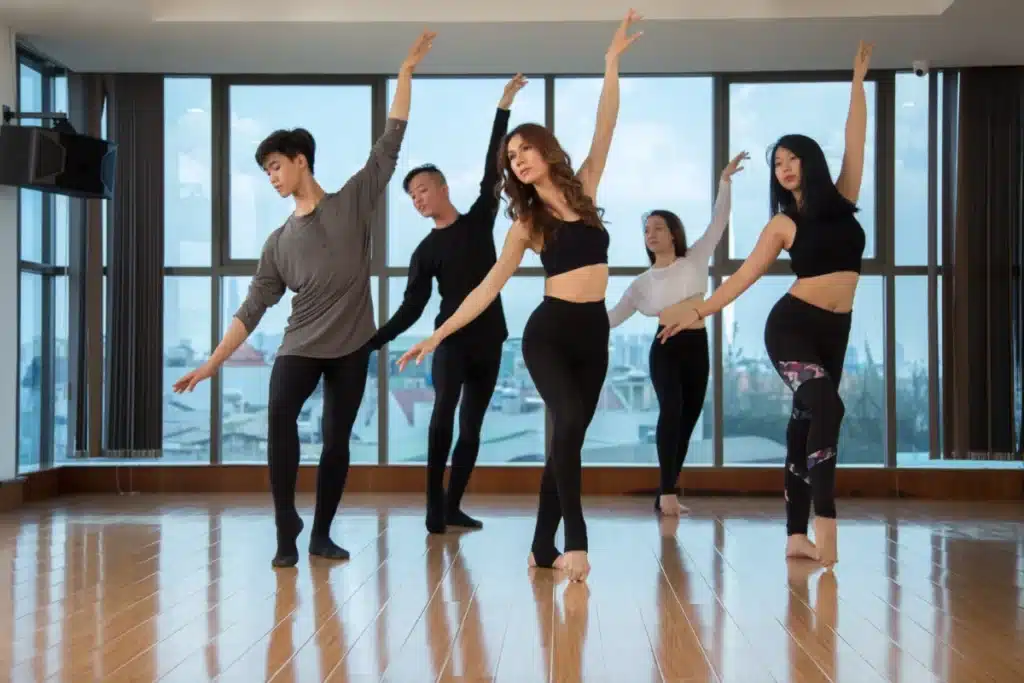
In dance, movements need dynamics to come to life. Dynamics are the emotions and force applied to our effort, actions, and tempo. They’re more than just steps.
For everyone in dance, whether you’re just starting or a seasoned pro, dynamics are like a tool that adds meaning and expression to your movements. It’s not just about learning dance steps. Like how a poet uses their own words to convey feelings, dancers use movements to express art in action. It’s about using words to describe how our dancing feels.
No matter your dance style or skill level, understanding the different dynamics in dance is important because it adds life and emotion to your movements. Dynamics give your dance a unique energy, making it more than just simple steps or routines.
Different Dynamics in Dance
Swinging Movement
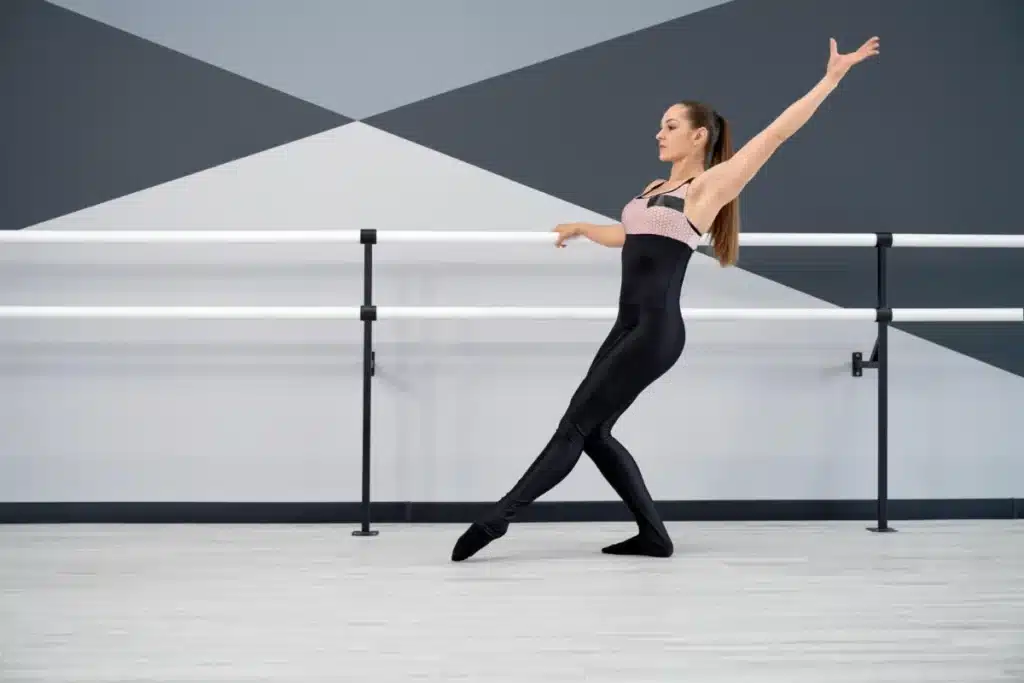
Swinging movement is a movement quality that’s all about the smooth and graceful motions in dance. It’s propelling your body from side to side like a pendulum swinging. It brings a feeling of ease and joy and is often seen in jazz and contemporary dance, focusing on seamless transition and fluidity.
This movement involves creating arches or circular shapes and moving the body forward and backward. In addition to this front-and-back motion, swinging in dance can also involve:
- Oscillating up and down
- Moving from corner to corner
- Or even going round and round
Suspended Movement
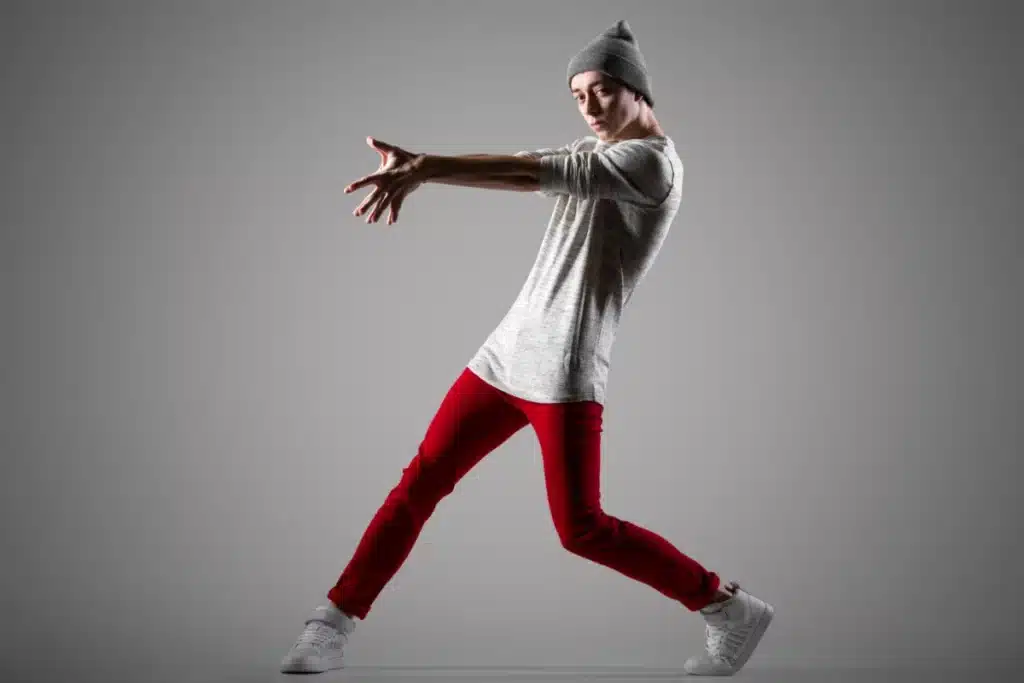
Suspended movement introduces an element of suspense and defiance of gravity. Dancers execute deliberate pauses, creating moments of anticipation and tension. This quality demands a lot of precision, balance, and muscle control. This precision is standard in contemporary and aerial dance, adding an intriguing visual element.
To perform this, the dancer needs to emphasise the highest points of their movement. They do this by holding, lingering, and hovering before moving back. It looks like they’re pausing in mid-air, making it seem like they’re defying gravity and adding a suspenseful feel to the performance.
Vibratory Movement
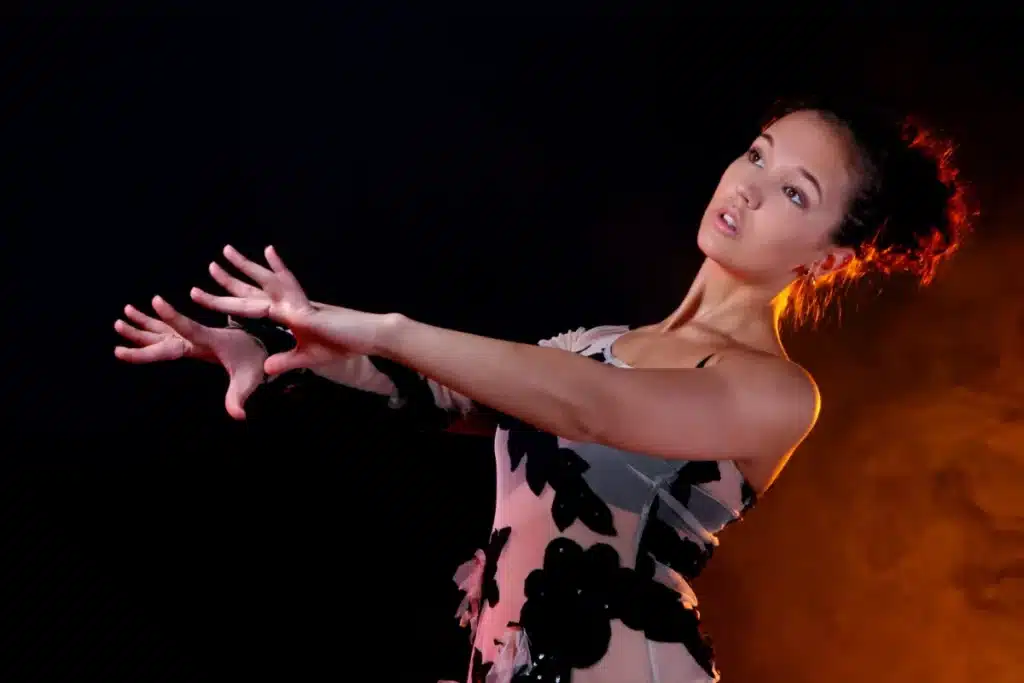
A vibratory dynamic in dance involves quick and continuous movements that go back and forth. These rapid motions can be in various directions—forward and backward, side to side, or up and down. Dancers get creative in how they move their bodies, whether it’s shaking and trembling all over or, focusing on specific body parts like quivering an arm, rapidly shaking their head, or forcefully moving a leg.
Vibratory movement pulses through the dancer’s body, injecting dynamic energy into the performance. Quick, repetitive vibrations characterise this movement quality, infusing the dance with vibrancy and intensity.
Sustained Movement
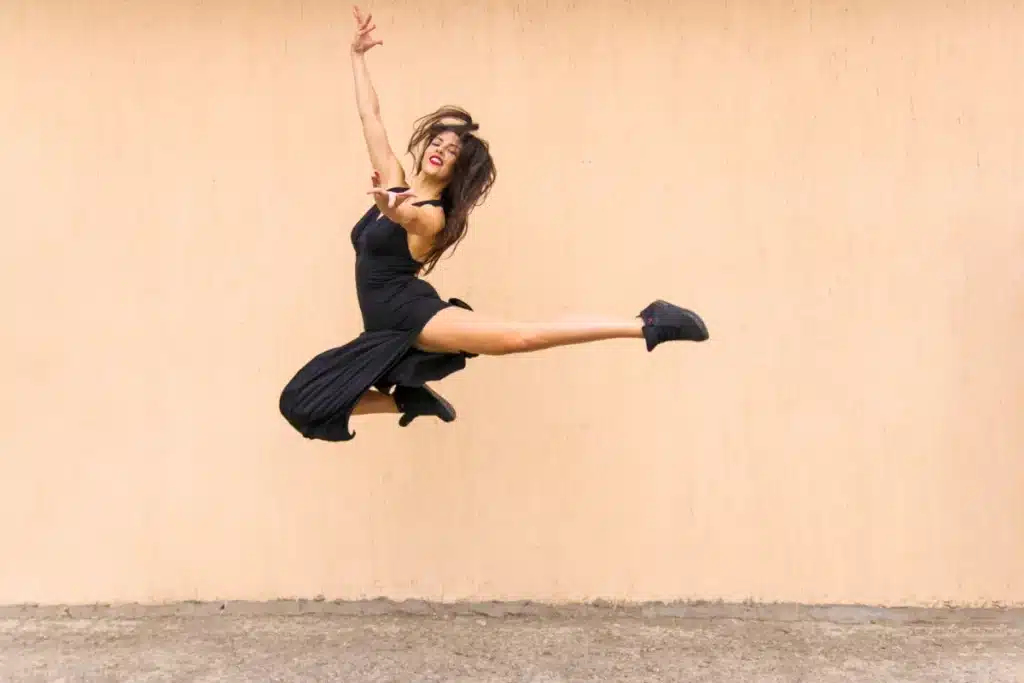
The sustained movement embraces continuity and control with deliberate, elongated motions that showcase expressiveness and meaning. However, sustained movement isn’t just strictly tied to slowness. Continuous and flowing fast movements can also be described as sustained. The key is the deliberate and controlled nature of the motion, whether it’s slow or fast.
Commonly associated with ballet and modern dance, sustained movements convey emotions such as calmness, introspection, or sensuality, allowing for a seamless flow between positions.
Percussive Movement

The percussive movement demands a high level of cardiovascular fitness, especially if you plan to sustain it for extended periods compared to the other forms of dance dynamics. This is because generating this quality involves exerting significant force and energy throughout your body and limbs.
It transforms the dancer into an instrument, with sharp, rhythmic accents punctuating the choreography. Staccato bursts of energy create a dynamic interplay with the accompanying music. This quality is evident in dance forms like tap, flamenco, and certain styles of hip-hop that prioritise precision and syncopation.
Collapsed Movement
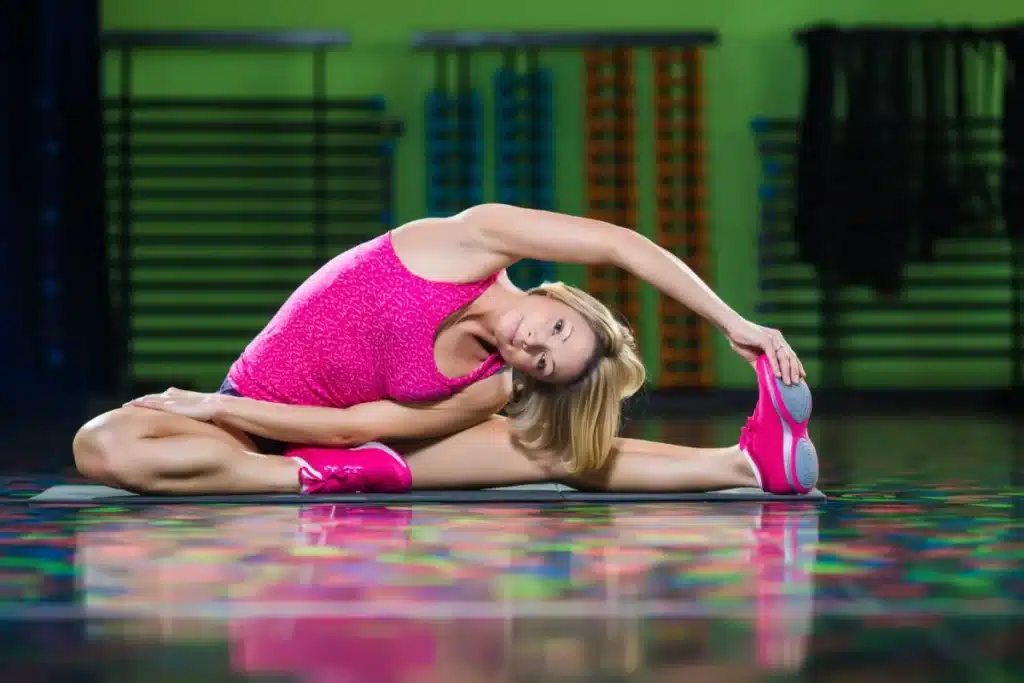
Collapsed movement involves a controlled release of energy, allowing the body to fold and yield. These moments of surrender and vulnerability add emotional depth to the choreography. While this dance element encompasses more than just a concave body shape or spinal rolling, collapsed movement plays a crucial role. Its prominence is linked to the evolution of modern dance, specifically designed as an alternative and contrasting style to ballet.
Collapsed movements are particularly poignant in contemporary dance and theatrical styles, creating shapes that resonate with internal conflict.
Want your kids to learn more?

The six movement qualities mentioned above provide a comprehensive framework for understanding the intricacies of dance dynamics.
Each quality brings a unique flavour to the performance, allowing dancers to convey stories, evoke emotions, and forge a profound connection with their audience.
At Creative Dance Academy, there are lots of fun dance activities that help kids explore and understand the different dynamics of dance while they’re practising, performing, and enjoying the dance. If you’re interested in widening your child’s dance resources and knowledge, don’t hesitate to contact us!

